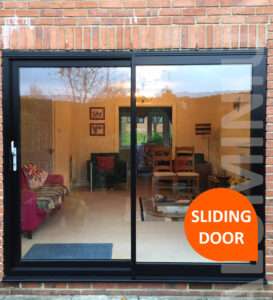Bay Window – Provides Extra Daylight Power
Bay windows, sticking out from a building, add a cool touch to your place. They’re like magic windows that make cozy corners inside. With three or more windows at different angles, they’re not just for looks – they make your room feel wide and breezy.

But here’s the real cool part – these windows bring in a ton of sunlight, giving you awesome views of the outside world and making your place feel connected to the changing seasons. And the best part? Bay windows can fit in with any style you like.
You can choose these windows in wood, vinyl, aluminum, or fiberglass. They’re like superheroes because they help keep your indoor temperatures comfy without using up too much energy.
Sure, putting in bay windows can be a bit tricky and might cost a bit more because they’re big and fancy. But a lot of folks say it’s totally worth it because they not only look good but also do a great job of saving energy.
Since bay windows stick out, you might want to make sure they keep the weather out too. So, add stuff like insulation and weather strips to stay comfy all year.
In a nutshell, bay windows give your home a mix of style, usefulness, and character. And if you’re thinking about getting them, pick the ones that match your style and find someone good to set them up. They’re not just a nice touch – they make your place even better.

The phrase “breezy” in the context of the sentence “They’re not just for looks – they make your room feel wide and breezy” means that the bay windows contribute to making the room feel open, airy, and well-ventilated. It suggests a light and refreshing atmosphere, as if a gentle breeze is flowing through the room. It’s used metaphorically to convey a sense of comfort and pleasantness.


FAQs about Bay Windows
Are bay windows only suitable for traditional home styles?
Not at all! Bay windows can be customized to complement a wide range of architectural styles, from traditional to modern and everything in between.
Do bay windows require special maintenance?
While maintenance depends on the chosen material, most bay windows are designed for easy upkeep. Regular cleaning and inspection will suffice for their longevity.
Can I install window treatments for bay windows?
Absolutely. Various window treatment options, such as curtains, blinds, or valances, can enhance privacy and style for your bay windows.
Are bay windows energy-efficient?
Yes, they can be. Opting for energy-efficient features like insulated frames and glass can significantly enhance the energy efficiency of bay windows.
What’s the ideal use of the space created by a bay window?
The space can serve multiple purposes, such as a cozy reading nook, a display area, or simply a spot to enjoy the outdoor view while indoors.










